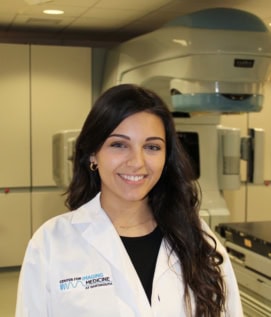A large, low density region of space surrounding the Milky Way may explain one of the most puzzling discrepancies in modern cosmology. Known as the Hubble tension, the issue arises from conflicting measurements of how fast the universe is expanding. Now, a new study suggests that the presence of a local cosmic void could explain this mismatch, and significantly improves agreement with observations compared to the Standard Model of cosmology.
“Numerically, the local measurements of the expansion rate are 8% higher than expected from the early universe, which amounts to over six times the measurement uncertainty,” says Indranil Banik, a cosmologist at the University of Portsmouth and a collaborator on the study. “It is by far the most serious issue facing cosmology.”
The Hubble constant describes how fast the universe is expanding and it can be estimated in two main ways. One method involves looking far into the past by observing the cosmic microwave background (CMB). This is radiation that was created shortly after the Big Bang and permeates the universe to this day. The other method relies on the observation of relatively nearby objects, such as supernovae and galaxies, to measure how fast space is expanding in our own cosmic neighbourhood.
If the Standard Model of cosmology is correct, these two approaches should yield the same result. But, they do not. Instead, local measurements suggest the universe is expanding faster than the expansion given by early-universe data. Furthermore, this disagreement is too large to dismiss as experimental error.
Local skewing
One possible explanation is that something about our local environment is skewing the results. “The idea is that we are in a region of the universe that is about 20% less dense than average out to a distance of about one billion light years,” Banik explains. “There is actually a lot of evidence for a local void from number counts of various kinds of sources across nearly the whole electromagnetic spectrum, from radio to X-rays.”
Such a void would subtly affect how we interpret the redshifts of galaxies. This is the stretching of the wavelength of galactic light that reveals how quickly a galaxy is receding from us. In an underdense (of relatively low density) region, galaxies are effectively pulled outward by the gravity of surrounding denser areas. This motion adds to the redshift caused by the universe’s overall expansion, making the local expansion rate appear faster than it actually is.
“The origin of such a [void] would trace back to a modest underdensity in the early universe, believed to have arisen from quantum fluctuations in density when the universe was extremely young and dense,” says Banik. However, he adds, “A void as large and deep as observed is not consistent with the standard cosmological model. You would need structure to grow faster than it predicts on scales larger than about one hundred million light–years”.
Testing the theory
To evaluate whether the void model holds up against data, Banik and his collaborator Vasileios Kalaitzidis at the UK’s University of St Andrews compared it with one of cosmology’s most precise measurement tools: baryon acoustic oscillations (BAOs). These are subtle ripples in the distribution of galaxies that were created by sound waves in the early universe and then frozen into the large-scale structure of space as it cooled.
Because these ripples provide a characteristic distance scale, they can be used as a “standard ruler” to track how the universe has expanded over time. By comparing the apparent size of this ruler at observed a different distances, cosmologists can map the universe’s expansion history. Crucially, if our galaxy lies inside a void, that would alter how the ruler appears locally, in a way that can be tested.
The researchers compared the predictions of their model with twenty years of BAO observations, and the results are striking. “BAO observations over the last twenty years show the void model is about one hundred million times more likely than the Standard Model of cosmology without any local void,” says Banik. “Importantly, the parameters of all these models were fixed without considering BAO data, so we were really just testing the predictions of each model.”
What lies ahead
While the void model appears promising, Banik says that more data are needed. “Additional BAO observations at relatively short distances would help a lot because that is where a local void would have the greatest impact.” Other promising avenues include measuring galaxy velocities and refining galaxy number counts. “I would suggest that it can be essentially confirmed in the next five to ten years, since we are talking about the nearby universe after all.”

Cosmic conflict continues: new data fuel the Hubble tension debate
Banik is also analysing supernovae data to explore whether the Hubble tension disappears at greater distances. “We are testing if the Hubble tension vanishes in the high-redshift or more distant universe, since a local void would not have much effect that far out,” he says.
Despite the challenges, Banik remains optimistic. With improved surveys and more refined models, cosmologists may be closing in on a solution to the Hubble tension.
The research is described in Monthly Notices of the Royal Astronomical Society.



 This podcast is supported by
This podcast is supported by